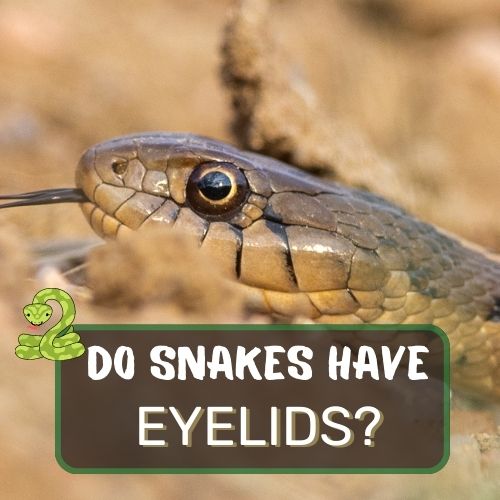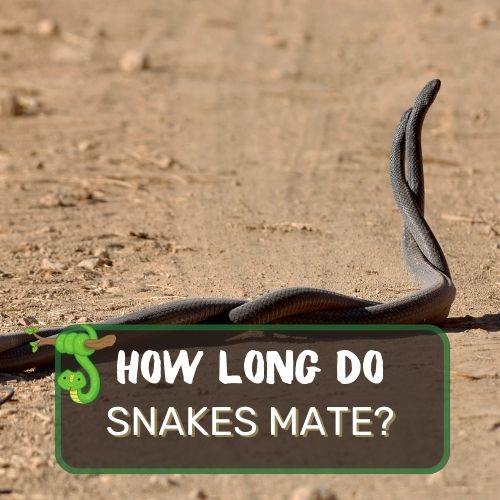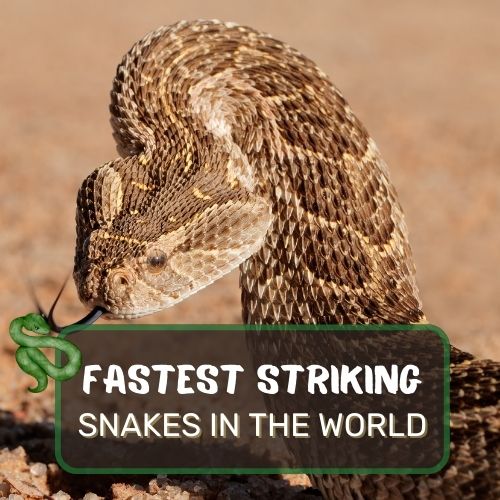
In this article, we delve into the intriguing question, “Do snakes have eyelids?”
We explore the fascinating world of snake eye anatomy, examining the absence of traditional eyelids and the unique adaptations they’ve developed to protect their eyes and maintain their exceptional vision.
Discover the role of the spectacle, a specialized transparent scale covering their eyes, and learn how snakes sleep without eyelids.
Additionally, we compare snake eye physiology with other reptiles, dispel common misconceptions, and present research findings that shed light on the wonders of these mesmerizing creatures.
Join us on this captivating journey to uncover the secrets of snakes’ remarkable eye structure.
Table of Contents
- 1 Do Snakes Have Eyelids? Short Answer
- 2 Overview of Snakes’ Eye Structure
- 3 Lack of Eyelids in Snakes
- 4 The Importance of Eye Protection in Snakes
- 5 How Snakes Sleep Without Eyelids
- 6 Comparative Anatomy: Snakes vs. Other Reptiles
- 7 Common Misconceptions About Snakes’ Eye Physiology
- 8 Research on Snakes’ Eye Physiology
- 9 Interaction of Snakes with Their Environment
- 10 FAQ
- 11 Conclusion
Do Snakes Have Eyelids? Short Answer
No, snakes do not have traditional eyelids like humans or many other animals. Instead, they have a specialized transparent scale called the spectacle or brille that covers and protects their eyes. This spectacle serves a similar purpose as eyelids, keeping the eyes moist and shielded from potential harm. While snakes cannot blink or close their eyes in the conventional way, their unique eye structure, including vertical slit-shaped pupils, allows them to excel as hunters with exceptional vision.
Overview of Snakes’ Eye Structure

When it comes to snakes, their eye structure is a fascinating subject that sets them apart from many other creatures. Let’s take a closer look at their eye anatomy, the differences between their eyes and human eyes, and the function of eyelids in general.
Snakes’ Eye Anatomy
Snakes possess a unique set of eyes that have evolved over millions of years to suit their specific needs. Unlike the round pupils of human eyes, snakes have vertically slit-shaped pupils, giving them a rather eerie appearance.
This vertical shape grants them a significant advantage in their predatory behavior.
Their eyes also lack the ability to move independently, making it necessary for snakes to rely on other means to survey their surroundings. Instead, they have an incredibly flexible skull, which allows them to use their entire body to scan the environment.
Differences Between Snakes’ Eyes and Human Eyes
The dissimilarities between snake eyes and human eyes are quite apparent. While humans possess eyelids that blink to keep the eyes lubricated and protected, snakes, on the other hand, lack eyelids altogether.
You might wonder how they manage without such a crucial feature.
The function of Eyelids in General
Before we delve into the mystery of why snakes lack eyelids, let’s quickly touch on the function of eyelids in general. For humans and many other animals, eyelids serve as a protective barrier, shielding the eyes from potential harm.
Additionally, blinking helps to moisten the eyes with tears, which are essential for maintaining good eye health.
Lack of Eyelids in Snakes

Why Snakes Don’t Have Eyelids
The absence of eyelids in snakes might seem like a disadvantage, but it is a remarkable adaptation that suits their lifestyle perfectly. Snakes are incredible hunters, and their unique eye structure plays a crucial role in their hunting prowess.
Since snakes cannot blink or close their eyes conventionally, they have evolved alternative strategies to keep their eyes safe and moist.
One of the most remarkable adaptations is the presence of a clear scale that covers their eyes, known as the spectacle or brille.
This brille is transparent, acting as a protective shield for their eyes, while also keeping them moist. The brille remains fixed, and snakes periodically shed it as they grow, revealing a new, fresh layer underneath.
Adaptations Snakes Have Developed Instead of Eyelids
1. Clear Scale Covering the Eyes (Brille)
The brille acts as a substitute for traditional eyelids, providing ample protection against dust, debris, and potential injuries. It also helps maintain the necessary moisture level to keep their eyes in optimal condition for hunting.
2. Role of Eye Scales in Protecting the Eyes
In addition to the brille, snakes have specialized scales around their eyes, which further safeguard these vital sensory organs. These scales are tough and resilient, shielding the eyes from any potential harm during their daily activities.
The Importance of Eye Protection in Snakes

Vulnerability of Snakes’ Eyes
Without eyelids, snakes’ eyes are more exposed to potential dangers in their environment. Dust, debris, and sharp objects can easily come into contact with their eyes, leading to potential injuries and impairing their vision.
Given their reliance on keen eyesight for hunting and survival, eye protection becomes crucial for their well-being.
Role of Eye Protection in Maintaining Snakes’ Vision
Eye protection is vital for snakes to maintain their excellent vision, which is essential for hunting and avoiding predators. Impaired vision can significantly impact their ability to catch prey and escape potential threats.
The clear scale covering the eyes (brille) acts as the first line of defense against these dangers, preventing harm and ensuring their visual prowess remains uncompromised.
How Eye Scales Prevent Injuries and Maintain Eye Moisture
The specialized scales surrounding the eyes play a crucial role in protecting snakes’ eyes from harm.
These scales are tough and durable, shielding the eyes from potential injuries that might result from rough terrain or encounters with prey or predators.
Moreover, the brille and eye scales help in maintaining the necessary moisture levels for the eyes. Proper hydration of the eyes is essential for clear vision, and these protective coverings ensure that the eyes do not dry out even in arid environments.
How Snakes Sleep Without Eyelids

Explanation of How Snakes Sleep with Their Eyes Open
The idea of sleeping with one’s eyes open might sound peculiar to us, but for snakes, it’s a natural behavior.
Since they lack eyelids, they cannot close their eyes as we do when we sleep. Instead, they rely on other adaptations to rest while staying alert to potential dangers in their surroundings.
Function of the Spectacles (Thin Clear Membranes)
The spectacles, also known as the brille or ocular scales, are thin, clear membranes that cover the eyes. These spectacles serve multiple purposes, one of which is enabling snakes to sleep without completely shutting off their vision.
How Spectacles Maintain Snakes’ Eye Health During Sleep
The spectacles play a vital role in maintaining snakes’ eye health during sleep. These transparent membranes keep the eyes moist, protecting them from drying out and maintaining proper eye function.
Additionally, the spectacles offer a degree of protection during slumber, preventing debris or potential threats from directly contacting the eyes while they are resting.
This adaptation ensures that snakes can remain vigilant even when taking a well-deserved nap.
Comparative Anatomy: Snakes vs. Other Reptiles

Comparison of Eyelid Structures in Different Reptiles
The eye anatomy of reptiles varies significantly across different species. While many reptiles possess traditional eyelids that blink, some, like snakes, have evolved without this feature.
Let’s compare the eyelid structures in various reptiles to understand better why snakes are unique in this regard.
In lizards and turtles, for example, you’ll find typical eyelids that close to protect their eyes when needed. These eyelids function similarly to those of humans, providing a crucial protective barrier for their eyes.
Why Snakes Lack Eyelids While Other Reptiles Have Them
The absence of eyelids in snakes can be attributed to their evolutionary path. As snakes adapted to their unique hunting and survival strategies, traditional eyelids became less advantageous.
Instead, they developed alternative means of eye protection, as we’ve explored in previous sections.
Snakes’ streamlined body shape and unique hunting techniques, such as using infrared vision to detect prey, demanded a different approach to eye protection.
The development of the spectacle and specialized eye scales proved more effective in ensuring their eyes remain safe and functional.
Unique Adaptations in Snakes’ Eye Structures
The eye structures of snakes are a testament to the wonders of adaptation. Their vertical slit-shaped pupils offer excellent depth perception, allowing them to accurately gauge distances and strike with precision.
Additionally, the lack of independent eye movement is offset by their highly flexible skulls, enabling them to scan their environment effectively.
Common Misconceptions About Snakes’ Eye Physiology

Dispelling Myths About Snakes Closing Their Eyes or Blinking
One common misconception about snakes is that they close their eyes or blink like other animals. As we’ve learned, snakes lack traditional eyelids, so they cannot blink in the way we do.
However, they do have the spectacle, which is always present and allows them to maintain visual function without closing their eyes.
The Difference Between Eye Protection and Eyelid Function
It’s crucial to distinguish between eye protection and the function of eyelids. While traditional eyelids offer eye protection, snakes have evolved an alternative protective mechanism with their spectacles and specialized eye scales.
These adaptations serve the same purpose as eyelids in safeguarding the eyes from harm and keeping them moist.
In summary, snakes’ eye physiology is a fascinating subject that highlights the diversity of life and the incredible ways species adapt to their environments.
The absence of traditional eyelids in snakes is a result of their unique hunting strategies and survival needs, leading to the development of innovative adaptations like the spectacle and specialized eye scales.
Understanding these differences dispels common misconceptions and grants us a deeper appreciation for the marvels of nature’s design.
Research on Snakes’ Eye Physiology

Studies on Snakes’ Eye Structures and Adaptations
Researchers and herpetologists have been intrigued by the unique eye structures of snakes and how they have adapted to their environment.
Various studies have focused on examining the anatomy of snake eyes, including the brille and specialized eye scales.
Advanced imaging techniques, such as high-resolution microscopy and CT scanning, have allowed scientists to explore the intricate details of snake eyes.
These studies have shed light on how the vertical slit-shaped pupils aid in their hunting strategies and how their fixed eye structure influences their behavior.
Findings on the Benefits of Eye Scales in Snakes
The research on eye scales in snakes has revealed their vital role in protecting the eyes and maintaining visual acuity.
These scales act as a physical barrier against potential harm, safeguarding the eyes from dust, debris, and injuries during their day-to-day activities.
Moreover, the transparent nature of the spectacle ensures that snakes’ eyes remain moist, contributing to their ability to see clearly even in harsh environments.
The findings from these studies provide valuable insights into the intricacies of snake eye physiology and how these adaptations contribute to their survival.
Interaction of Snakes with Their Environment

How Lack of Eyelids Affects Snakes’ Behavior and Survival
The absence of traditional eyelids influences several aspects of snakes’ behavior and survival strategies.
For instance, since they cannot blink, snakes have developed other means to keep their eyes lubricated, such as using their tongues to spread moisture over their eyes. This unique behavior ensures that their eyes stay hydrated and functional.
The inability to close their eyes also impacts their rest patterns. Unlike many animals that sleep with their eyes closed, snakes sleep with their eyes open due to the perpetual presence of the spectacle.
This allows them to remain vigilant and quickly respond to potential threats or prey.
Influence of Eye Scales on Hunting, Mating, and Other Activities
Snakes’ eye scales play a critical role in their daily activities, especially when it comes to hunting and mating.
These scales protect their eyes during hunts, preventing injuries that could otherwise hinder their ability to capture prey.
The keen vision provided by their unique eye structure enhances their hunting success, making them formidable predators in their ecosystems.
During mating rituals and territorial displays, snakes rely heavily on visual cues. Their well-protected eyes ensure they can accurately assess potential mates and rivals, influencing their interactions and reproductive success.
FAQ
Do Snakes Ever Close Their Eyes?
No, snakes do not close their eyes in the conventional way that animals with eyelids do. Due to the absence of traditional eyelids, snakes cannot blink or shut their eyes completely. However, they have the spectacle, a transparent scale covering their eyes, which helps protect and keep their eyes moist.
How Do Snakes Sleep Without Eyelids?
Snakes sleep with their eyes open due to the presence of the spectacle. While they cannot close their eyes like animals with eyelids, the spectacle keeps their eyes protected and moist during rest. Additionally, snakes are known to exhibit a type of sleep known as “resting-state behavior,” where they remain alert and vigilant even during slumber.
Which Animals Have No Eyelids?
Apart from snakes, there are several other animals that lack traditional eyelids. Some examples include fish, birds of prey (eagles, hawks), and certain types of amphibians (frogs and toads). These animals have evolved alternative adaptations to protect and maintain the health of their eyes.
Are There Any Snakes With Eyelids?
No, all snakes lack traditional eyelids. Regardless of the species, snakes do not have movable eyelids that can blink or close. Instead, they rely on the spectacle and specialized eye scales for eye protection and moisture retention.
Conclusion
In conclusion, the eye physiology of snakes is a captivating subject that highlights the marvels of evolution and adaptation.
The absence of traditional eyelids in snakes has paved the way for unique and efficient eye structures. The spectacle and specialized eye scales play a vital role in protecting their eyes from harm and ensuring clear vision.
Throughout this article, we have explored the remarkable adaptations of snakes’ eye anatomy, from their vertical slit-shaped pupils to their transparent spectacles.
We’ve learned how these features allow snakes to excel as skilled hunters and survivors in various environments.
The interactions of snakes with their environment, their sleeping habits, and the differences between their eye physiology and that of other reptiles have all contributed to our understanding of the diversity and complexity of life on Earth.
The uniqueness of snakes’ eye structure is a testament to the endless possibilities that arise from nature’s endless ingenuity.




0 Comments